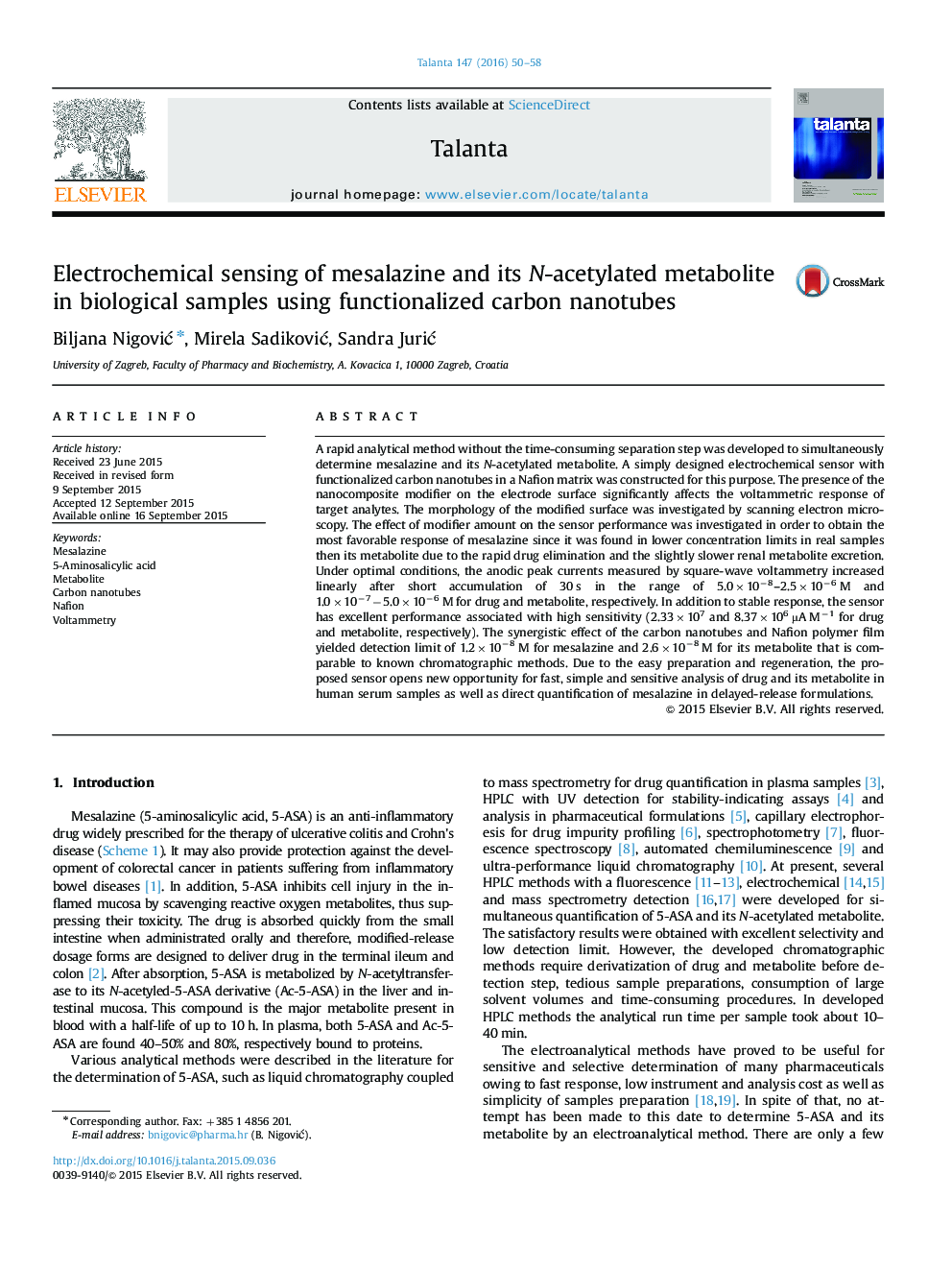| Article ID | Journal | Published Year | Pages | File Type |
|---|---|---|---|---|
| 1242723 | Talanta | 2016 | 9 Pages |
•First method for analysis of mesalazine and its metabolite without separation step.•Simple designed electrochemical sensor with nanocomposite film.•New opportunity for fast analysis of metabolite in human serum samples.•Direct quantification of mesalazine in delayed-release formulations.
A rapid analytical method without the time-consuming separation step was developed to simultaneously determine mesalazine and its N-acetylated metabolite. A simply designed electrochemical sensor with functionalized carbon nanotubes in a Nafion matrix was constructed for this purpose. The presence of the nanocomposite modifier on the electrode surface significantly affects the voltammetric response of target analytes. The morphology of the modified surface was investigated by scanning electron microscopy. The effect of modifier amount on the sensor performance was investigated in order to obtain the most favorable response of mesalazine since it was found in lower concentration limits in real samples then its metabolite due to the rapid drug elimination and the slightly slower renal metabolite excretion. Under optimal conditions, the anodic peak currents measured by square-wave voltammetry increased linearly after short accumulation of 30 s in the range of 5.0×10−8–2.5×10−6 M and 1.0×10−7−5.0×10−6 M for drug and metabolite, respectively. In addition to stable response, the sensor has excellent performance associated with high sensitivity (2.33×107 and 8.37×106 µA M−1 for drug and metabolite, respectively). The synergistic effect of the carbon nanotubes and Nafion polymer film yielded detection limit of 1.2×10−8 M for mesalazine and 2.6×10−8 M for its metabolite that is comparable to known chromatographic methods. Due to the easy preparation and regeneration, the proposed sensor opens new opportunity for fast, simple and sensitive analysis of drug and its metabolite in human serum samples as well as direct quantification of mesalazine in delayed-release formulations.
Graphical abstractFigure optionsDownload full-size imageDownload as PowerPoint slide
